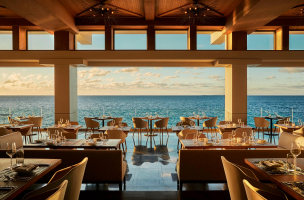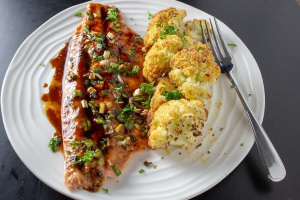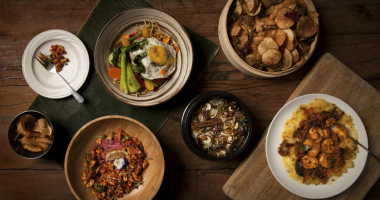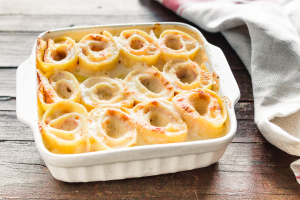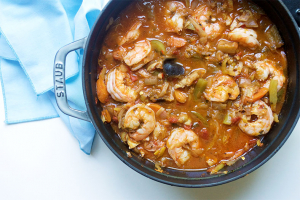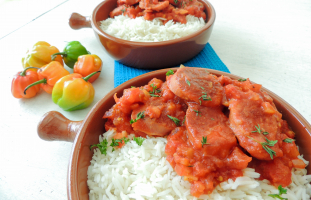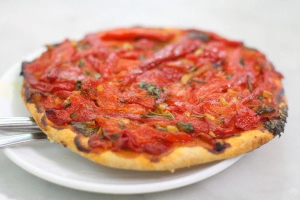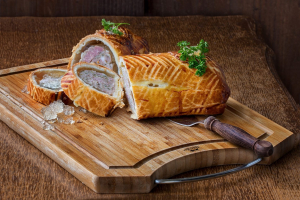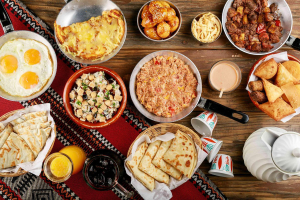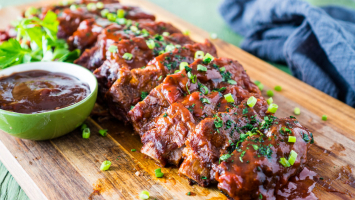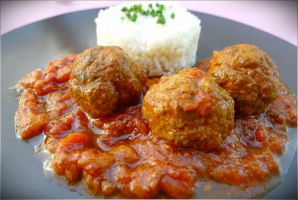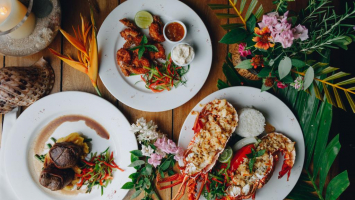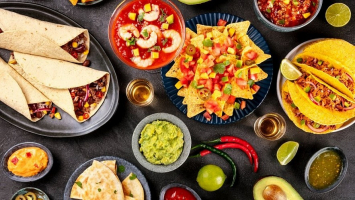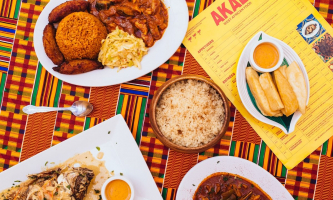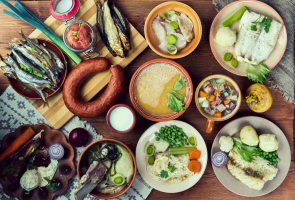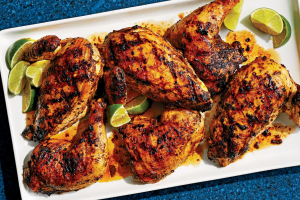Top 10 Best Foods in Cameroon
Cameroonian cuisine is known for its complexity and diversity, having been inspired by many colonizers including the Portuguese, French, and British. In ... read more...current times, the country has restaurants that serve food from all over the world, including China, Lebanon, and Greece. Let's Toplist explore the popular Cameroonian cuisine listed below.
-
Eru Soup (Spinach/Okazi leaves) is a filling Cameroonian green dish full of protein and aromatics that will make your taste buds sing with delight. Eru soup is produced from the creeping plant Gnetum africanum, an evergreen vine native to Central and West African woods.
The leaves give the soup its name: eru soup. This dish is reminiscent of Afang soup. The leaves give the soup its name: eru soup. This dish is reminiscent of Afang soup. This delicious dish is quite popular in Cameroon, and the Bayangis (a tribe in Cameroon's southwest province) like it. When it comes to cooking eru, most individuals are tempted to use too much oil. If you want healthy eru, cut back on the oil and you can enjoy this dish guilt-free on a regular basis.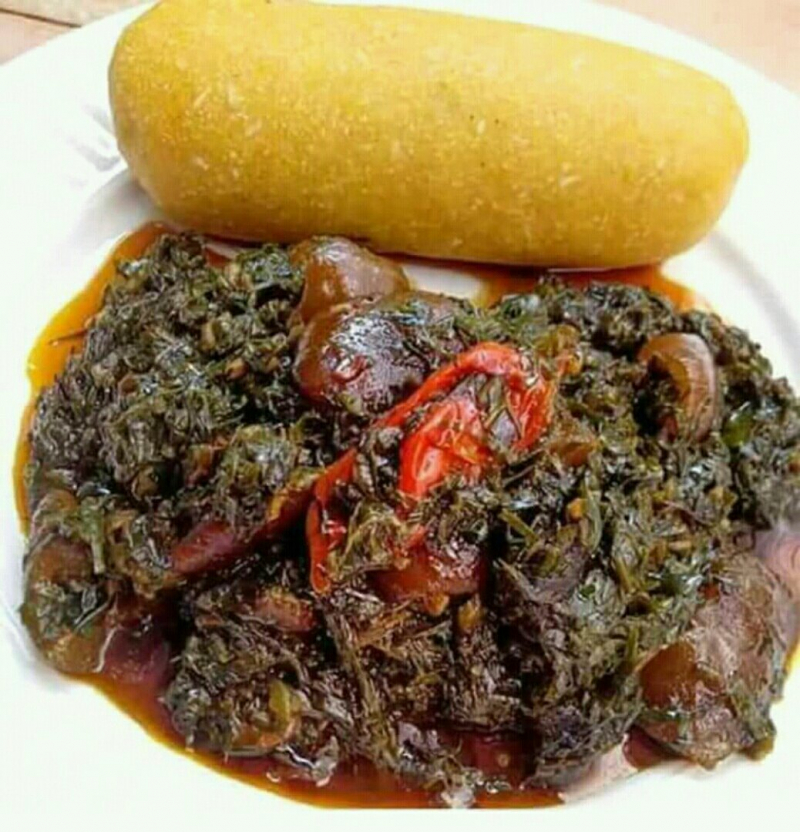
Source: Stella's Blog - WordPress.com Source: Stephanie A -
In Cameroon, koki beans are a typical cuisine. It is also a favorite dish of many Cameroonians, both at home and in the diaspora. The Koki Beans have a cake-like appearance, are yellow in color, soft, and delicious.
Koki's major component is black-eyed beans. It comes from West Africa and is also known as black-eyed peas. This bean is high in nutrients (folate, copper, thiamine, iron, etc.) and is helpful for digestion, weight loss, and other things. People removed the beans from their shells after harvesting. Then they peeled off the skins of each bean one by one.
The component that gives the Koki its yellow color and texture is unrefined red palmoil. It's a must-have while making this dish; unless you're preparing something different, you can't substitute another oil. Carotenoids and vitamin E are abundant in red palm oil. This oil is high in vitamins, minerals, and antioxidants.
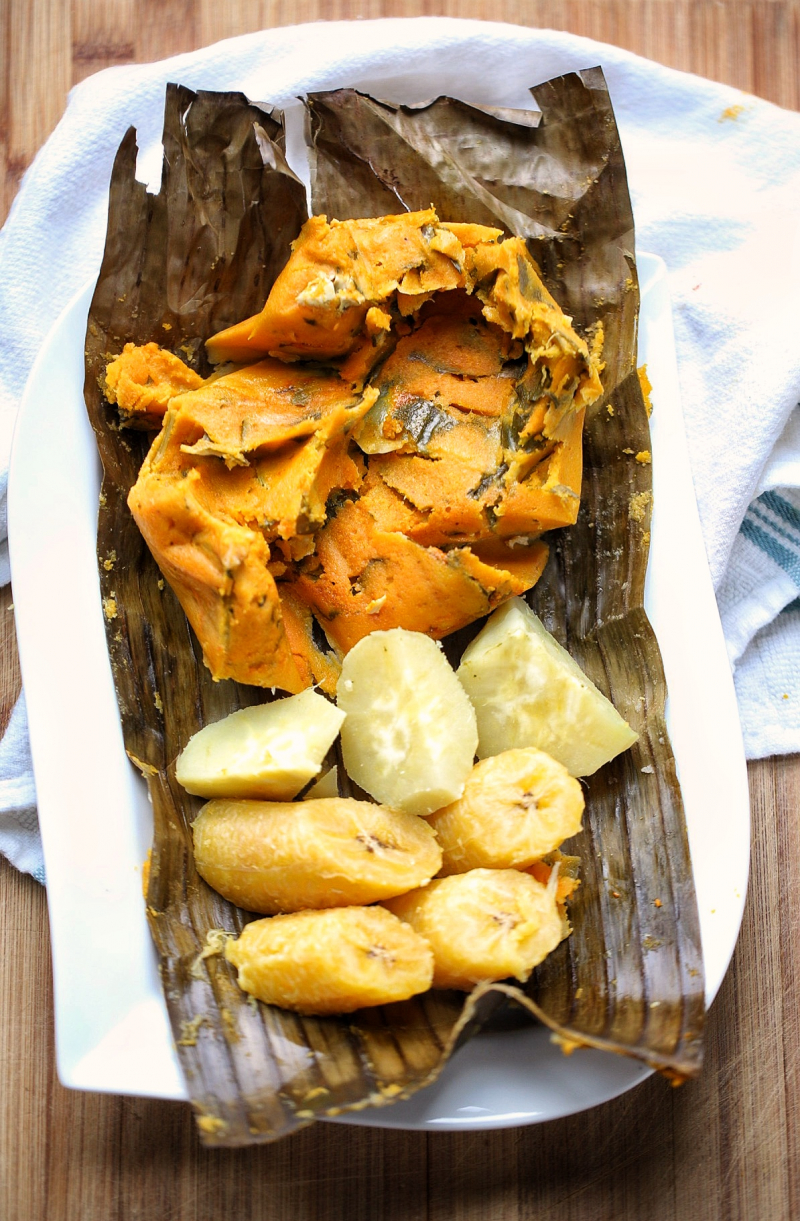
Source: AFROVITALITYEATS Source: Precious Kitchen -
Accra Banana consists of African Banana Fritters. These fritters are produced in various ways across the continent, but the basic premise remains the same. You combine mashed bananas with a starch, then divide the mixture into small chunks and deep fry them.
Cassava is utilized in a variety of ways in Cameroon. It is used to make fufu (a dough-like starchy side dish eaten with soups), garri (cassava granules), bobolo (cassava sticks), and other products. And, of course, it is used to make Accra Banana, also known as Accra Cassava. Cassava is shredded and blended with mashed/pounded banana to form Accra Banana. You obtained previously grated cassava from an Asian supermarket to make the process easier.
It is quite cheap in Africa. On the side of the road, women fried rhis fritters. With 25 frs, you can buy more than ten of them. It complements hot pepper sources / chilli sources created with hot herbanero peppers. People are literally lining up for this round of deliciousness.
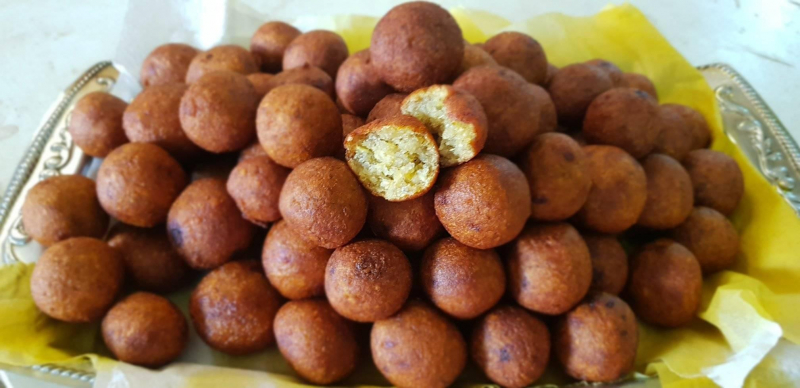
Source: Finmail Mailbox Source: Precious Kitchen -
Ekwang is a nutrient-dense delicacy from Cameroon's South West Region. However, it is now consumed and praised in other parts of Cameroon and around the world. Ekwang, also known as ekpang nkukwo, is a traditional Nigerian cuisine from the Efik and Ibibio tribes. It is also popular in Cameroon, particularly among the Bakweri tribe.
It is created with freshly grated cocoyam, wrapped in lush greens, and slowly boiled with various types of fresh or smoked meat, fish, crayfish, red oil, and other spices until cooked to perfection. Although cocoyam leaves or sweet bitter leaves are commonly used, you can use any fresh leafy greens available, such as collard greens, spinach, or even romaine lettuce, or a combination of these. If you have a grater and are willing to use it, go ahead and do so. However, because most of us do not have the time to grate the cocoyam, you can use a food processor to grate the cocoyam.
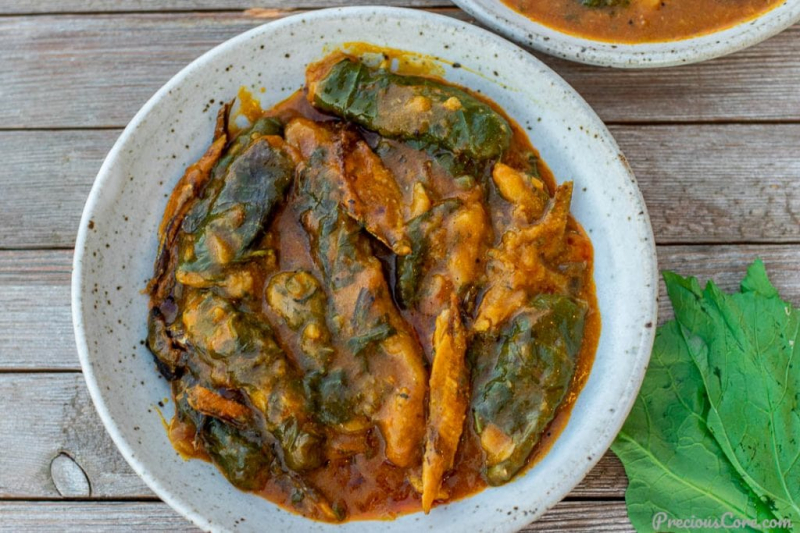
Source: Precious Core Source: Precious Kitchen -
When you want to communicate your feelings for someone, cook them some Ekwang. That is, whether the person is aware of what Ekwang is. Ndole - An aromatic Cameroonian spinach stew comprised of spinach and bitter leaves that is spiced with garlic, crayfish, and shrimp and meat. It is a delicious blend of peanuts, bitter greens (spinach can be substituted), flesh (stock fish, shrimp, crayfish (dry shrimp), and oil. It has the flavor of stewed spinach dip, but it's even better! It can be made in a variety of ways using fragrant spices and meat, with more or fewer vegetables and meat depending on personal preference.
The Ndole leaves may impart a little bitter flavor, while the presence of peanuts may impart a nutty flavor. A slew of spices, on the other hand, would give it a searing flavor.
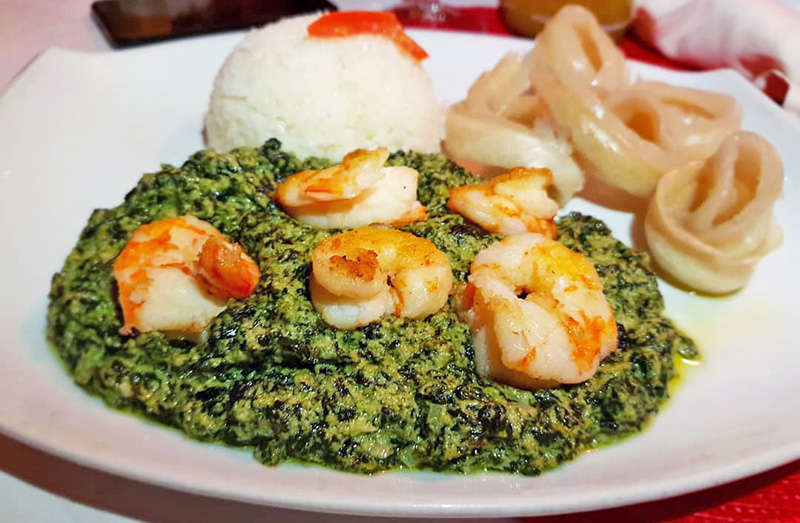
Source: Tropical Market Source: Precious Kitchen -
Unripe plantain and bitter leaf are used to make Born House Planti. The plantain is sliced into large slices and fried in a flavorful combination of bitter leaves, palm oil, and spices. Bitter leaf is a vegetable plant that is consumed throughout Africa.
Born House is a Cameroonian colloquial word for a ceremony that is (or was) usually organized to greet a new mother and her infant. These gatherings are typically attended by elderly women with childbearing experience. This is the food served at Cameroonian Born House ceremonies, hence the name Born House Planti (Planti from Plantains). It's made using plantains fried in palm oil with ethnic flavors. Plantains are said to be the major ingredient in the dish because the baby's umbilical cord is said to be buried beneath the plantain tree. So, as the plantains mature, they are prepared into a feast that well-wishers consume as a sign of blessing for the newborn.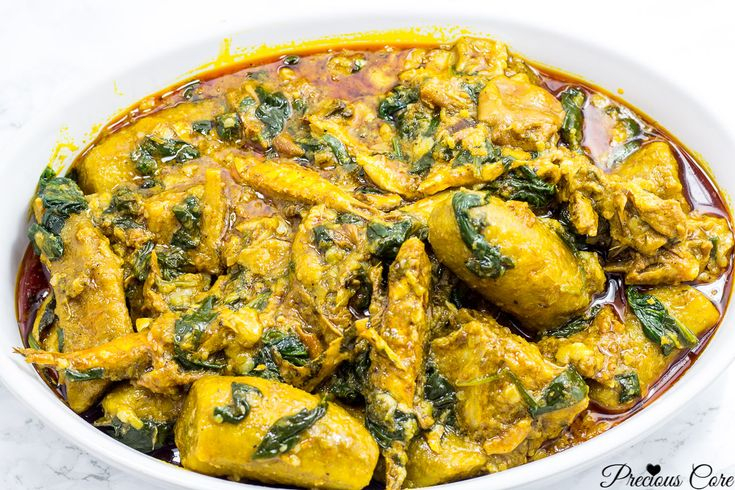
Source: Precious Core Source: Precious Kitchen -
Puff puff is a famous street snack in West Africa. Most people prefer it while it is still warm from the oven. It's suitable for breakfast, lunch, and dinner. It's a side dish to go with pap and beans. Puff puff is a favorite of both children and adults.
Doughnut (puff-puff) and beans/pap is a national dish in Cameroon that is liked by many people and is also used as a day's meal for others. PAP is manufactured from maize, whereas doughnuts, also known as "puff-puff" and "beignet" in French, are made from flour. It is the most popular roadside dish offered by both men and women and can be found in practically every corner of Cameroon's ten regions. It is so adaptable that you can eat it for breakfast, lunch, or dinner. This meal is typically consumed in university regions by students or workers who cannot afford a square meal, arrive late from school or work, or use it as a snack. It is typically served with stewed sauce and fried fish known colloquially as "Achombo."
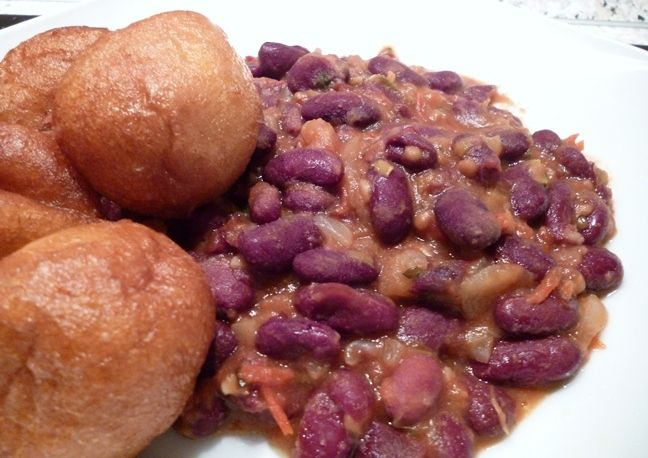
Source: Pinterest Source: Yvonne Mforneh's kitchen -
Njama Njama and FuFu - a popular green vegetable in Cameroon, particularly in the North West Region, and to a lesser extent in Nigeria and Kenya, seasoned with paprika, cayenne pepper, and a hint of heat from the habanero pepper.
Njama Njama is a type of green leafy vegetable known scientifically as solanum scabrum. Before cooking, the leaves and soft stems of each main stem are removed. They are then boiled without water or with very little water, depending on how soft the Njama Njama is. When exposed to heat, the majority of the leaves leak forth water. After cooking, the vegetable is pressed and sliced into bite-sized pieces for eager mouths. The vegetable is then stir-fried with tomatoes and onions, tossed in palm oil, or cooked with egusi (melon seeds), which is my preferred option. Njama Njama is traditionally served with maize fufu, although it can also be served with boiling cocoyams, boiled/fried plantains, or boiled yams.
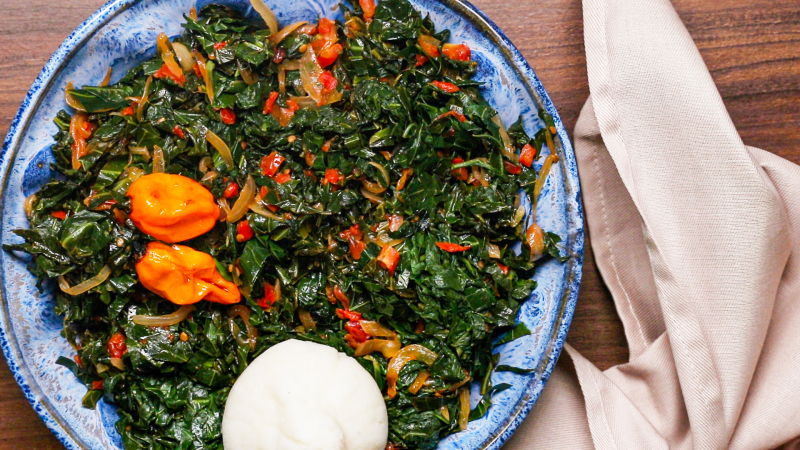
Source: Jikoni.co Source: Cooking With Claudy -
Egusi soup is a hearty unique dish that will please your taste senses. It is a mainstay in most West African homes and is a simple one-pot dinner that is frequently accompanied by items such as Eba, Amala, Semovita, Pounded yam, and Fufu. Egusi is a West African term for the seeds of plants such as squash, melons, and gourds, which form a basic component in many West African recipes when dried and pulverized. Egusi is very popular with pounded yam in Nigerian culture. These seeds are high in fat and protein, and they contribute these nutrients to West African cuisine.
Nigerian Egusi Soup is a soup that incorporates leafy and other vegetables and is thickened with pulverized melon seeds. It is one of the most popular soups cooked by most tribes in Nigeria, with significant variation, and is frequently served with meals such as pounded yams. It can be made with goat, meat, fish, or shellfish!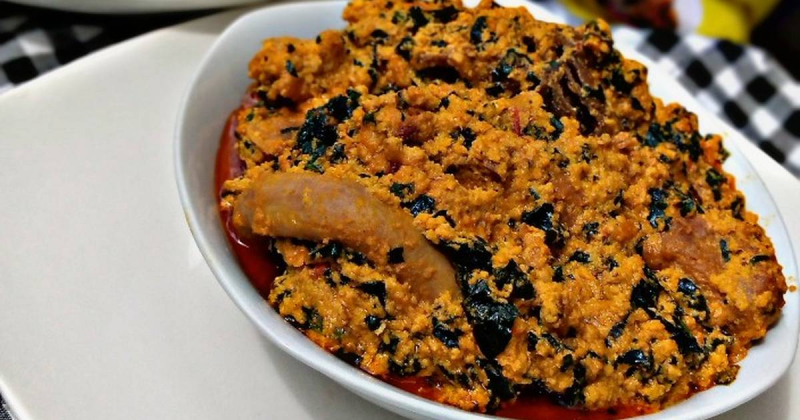
Source: cookpad.com Source: Sisi Jemimah's Recipes -
Vitumbua is a gluten-free East African breakfast pancake that is popular in most African countries. Though their names vary, for example, Masa in Western African countries such as Nigeria and Cameroon. This dish is popular in Swahili-speaking nations such as Kenya, Tanzania, Zanzibar, Uganda, Zambia, Rwanda, Somalia, Burundi, Malawi, and Mozambique. However, this Vitumbua can also be found in a few Asian nations such as India and Indonesia. Not only can you have these gluten-free Vitumbua for breakfast, but you can also eat them for snacks in the evening with some homemade sauce or just with honey. Despite the fact that this dish calls for spices such as cardamom, nutmeg, and almond extract, it is customarily flavored with cardamoms. East Africans pair these ultimate cuties with a cup of chai to finish their breakfast or snacks.
It has a hard exterior, but as you bite into it, the fluffiness of the donut melts in your mouth. This would be a warm affair for you thanks to the caramel dip.
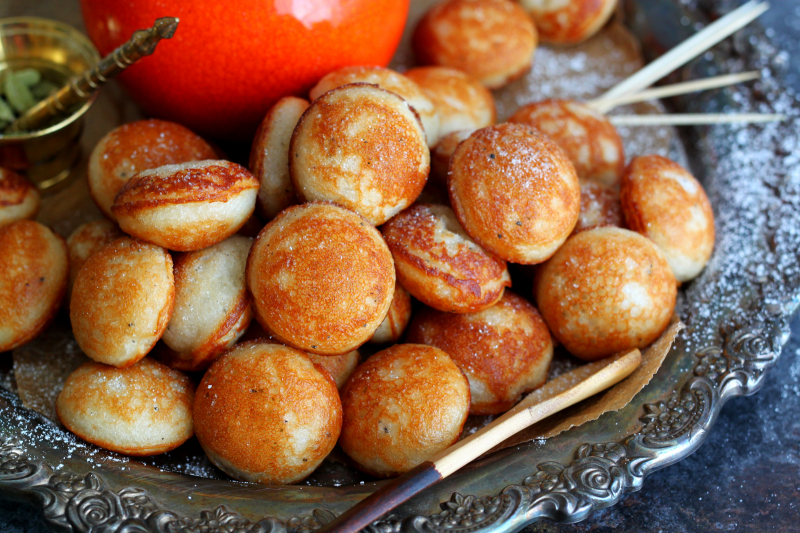
Source: Sanjana Feasts Source: Mumsicle's Kitchen













